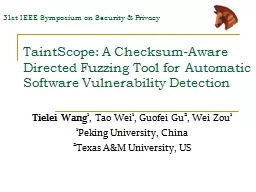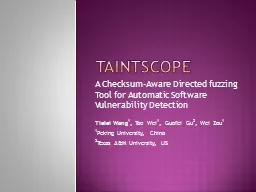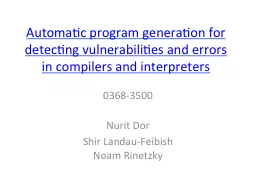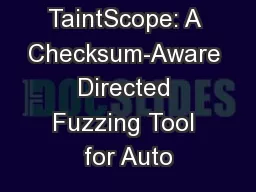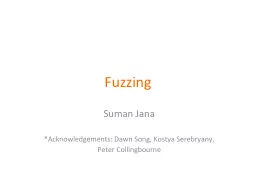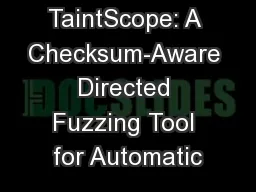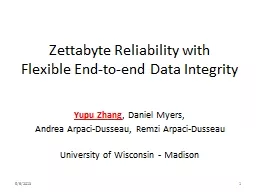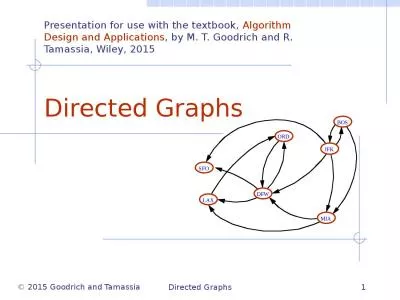PPT-TaintScope: A Checksum-Aware Directed Fuzzing Tool for Auto
Author : test | Published Date : 2016-05-27
Tielei Wang 1 Tao Wei 1 Guofei Gu 2 Wei Zou 1 1 Peking University China 2 Texas AampM University US 31st IEEE Symposium on Security amp Privacy Outline Introduction
Presentation Embed Code
Download Presentation
Download Presentation The PPT/PDF document "TaintScope: A Checksum-Aware Directed Fu..." is the property of its rightful owner. Permission is granted to download and print the materials on this website for personal, non-commercial use only, and to display it on your personal computer provided you do not modify the materials and that you retain all copyright notices contained in the materials. By downloading content from our website, you accept the terms of this agreement.
TaintScope: A Checksum-Aware Directed Fuzzing Tool for Auto: Transcript
Download Rules Of Document
"TaintScope: A Checksum-Aware Directed Fuzzing Tool for Auto"The content belongs to its owner. You may download and print it for personal use, without modification, and keep all copyright notices. By downloading, you agree to these terms.
Related Documents

